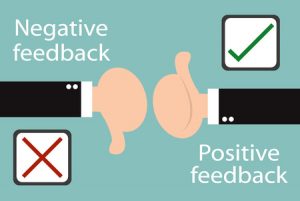As a teacher, everything you do in the classroom has an unprecedented ripple effect, including your general attitude. This article discusses how a teacher’s lack or abundance of motivation affects their students.
Think back to your school or college days: think of one teacher who inspired and enthralled you, and another that didn’t – why was this? What were the differences? As well as sharing a passion not just for their subject but for learning, one key difference was their motivation. Excellent teachers are fuelled by their passion for student learning. This often grows through the effort it takes to become a qualified teacher, whether that be through a traditional university route, or by starting off with an online teaching course. As a teacher or teaching assistant, you are now in the position to pass on vital skills and knowledge to your students.
An excellent teacher fuels the natural curiosity to learn that is in us all. But why is motivation important?
A successful learning environment
Motivation is key to a successful classroom whether it is a class full of primary school children or a workshop in a college setting.
A motivated teacher has a different outlook that one who is simply ‘going through the motions’.
Motivation is what energises, directs and sustains positive behaviour in the classroom. It means creating challenging goals alongside activities and tasks that help a student or class reach these dizzying heights.
Sparking the desire to explore and to learn, a motivated teacher doesn’t necessarily mean someone who bounces around the classroom with unfettered energy. It isn’t about being popular, either.
Value and respect
In considering motivation and teachers, we need to think back to the two examples we started with.
What kind of learning environment did the good teacher create? And what kind of environment did the not-so-good teacher create? Was this experience particular to you or was it shared by the whole class?
The truth is, you may have found some lessons and a certain teacher boring, but the person sat next to you found it interesting and seemed to do well.
A motivated teacher is one who personalises and individualises learning. And to do so, they create a learning environment in which they value and respect each individual learner.
There is a saying – try to teach a goldfish to climb and it will spend the rest of its life thinking it is stupid – and this is what underlies the teaching methods of a teacher motivated to help ALL their students to learn.
Personality
Teaching is not a personality contest BUT, personality and likability do play a part in fostering a successful learning environment.
Teacher training today looks at every aspect and every minute of the lesson, from the greeting at the door of the classroom, to the respect within the four walls of the learning space, to how a lesson is ended.
It is also about a teacher interacting with students outside of the classroom when they engage with students in the hallways, the canteen, the schoolyard and other areas of the school or college.
When a student feels a personal connection with a teacher, they engage better. More importantly, they want to engage with someone they see and feel as liking them but valuing and respecting them too.
Teacher motivation in the classroom – what does it look like?
What makes a good teacher is a combination of all kinds of factors, principles, skills and more than a dash of personality;
- Kindness and approachability – most of us will remember a teacher who is not only kind and nice, but approachable too. When a student asks a question or seeks clarification, what attitude are they met with?
- Warm, welcoming and stimulating – a motivated teacher will use every part of their classroom to inspire and stimulate. From wall displays to objects on display, the classroom is welcoming and clearly a place to learn and explore.
- A ‘happening’ place – worksheets and presentations have their place, but a motivated teacher isn’t frightened to create a ‘happening’ learning environment. In other words, students don’t spend the whole time sat behind desks, copying from books or be lectured to. They interact, physically moving around, asking questions, experimenting and trying new things.
- Connections – when a child or student learns something new, what happens with it? Does it get put into a box in the mind or is it related to real-life? Successful teachers are able to bring about the connections that complete the learning circle for a student, connecting a skill or piece of knowledge with the world around them.
Motivation has long been studied by modern and ancient scholars. What do you think it is? What motivates you to learn and to teach?
Feedback is important. It is the information that we need to be able to improve our performance, whether that is the work we are doing day-to-day, or the work we are doing to gain new qualifications.
It comes in various forms too, including written responses to work completed, to grades, peer reviews and other formal measures.
It can also be informal – for example, when given a presentation, if the faces of your audience register disinterest, they are feeding back that you are not quite hitting the mark.
Feedback can be both positive and negative. Modern appraisal methods will often try to incorporate the two. For example, formal feedback may list positive comments or points, as well as developmental issues or concerns.
There are times when feedback can be wholly negative, a situation that is disheartening. Feedback is no longer about marking with a red pen, placing crosses and question marks against sentences or concepts a student is grappling with.

Reflecting on feedback in an efficient and effective way doesn’t happen overnight.
As part of managing feedback, students also need to be taught how to use it, and to their advantage too.
Three Types of Feedback
How to give feedback and what to feedback to students are arguments as old as education itself. Opinions and ideas vary; discussions are ongoing. But two Harvard law professors, Douglas Stone and Sheila Heen, suggest that knowing what kind of feedback is needed is the starting point.
They go on to suggest that there are three types of feedback students need:
- Appreciation – this style of feedback acknowledges, give credit or thanks for what the student has achieved.
- Coaching – this style helps the student to fine tune skills, tweak understanding, increase knowledge and improve the relationship between student and tutor.
- Evaluation – this style effectively scores or marks the student’s work against a pre-determined set of criteria or standards.
Making Sense of Feedback
Managing feedback means understanding what it means to you, as a student. There are many ways of doing this but essentially, they all involve the student reflecting on what is being said or written as they receive it.
#1 Reflection
Reflective practice is not only used in schools and colleges but across a whole swathe of learning and development. Practitioners such as counsellors and therapists use reflective practice to understand how or why they are reacting or responding in such a way.
Reflecting on feedback is important. Using all three of the styles above, how well did you receive or use the last set of feedback you received? This could be feedback on a tutor marked essay you completed or feedback from your sporting coach.
#2 Individual Response
Negative feedback – criticism – can be hard to take. Some people seem unfazed by criticism of their performance, but other students take it personally.
This is because some people need to have a context frame to their feedback. That is, tell them first what they are doing well and then make suggestions how to improve on a certain aspect.
Teaching courses focus on how to give feedback, the current ways of imparting information and this includes context setting.
In high schools, for example, the ‘two stars and a wish’ approach has been in use for some time. This is where student’s peer assess work, or their own work, by noting two things that work well and one thing that they felt needed improving upon. This is context feedback and assessment.

Some people seem unfazed by criticism of their performance, but other students take it personally.
Not all activities are marked, scored or evaluated in the same way. But, students may be unaware of this.
They may be accustomed to receiving feedback in a certain way but when it arrives in a different style, it can be disconcerting.
Stone and Heen suggest that, as part of helping students to reflect and work with feedback, they need to know how this feedback will arrive for a certain piece of work. Will it be a score accompanied by a small amount of feedback? Or will it come in the shape of a longer piece of text, or will the feedback be delivered verbally?
Takes Practice
Reflecting on feedback in an efficient and effective way doesn’t happen overnight. Students may still complain of disparities and unfairness; they may still feel that criticism is harsh and unnecessary.
Pleasant feedback is always good to hear, but is it providing enough basis for the student to move on?
Either way, providing students with useful feedback is an important part of the learning process. How could you improve the giving and receiving of feedback?
If you want to start your journey becoming a teacher and building the skillset, online teaching assistant courses are a great way to go!
